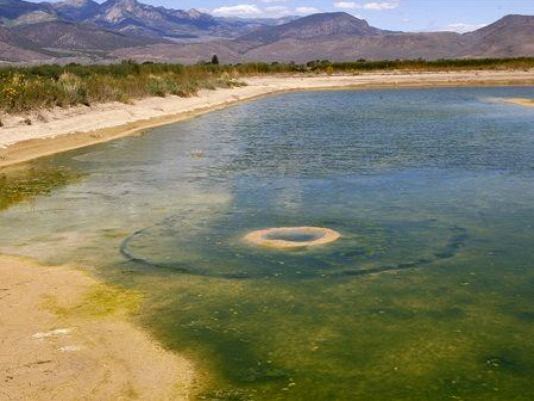Gary Dalton stava svuotando lo stagno di irrigazione sul suo terreno agricolo in Circleville, Utah, quando ha fatto una scoperta sorprendente: un cratere gigante sul fondo del bacino. "Il sole era in alto, così ho visto questa formazione che nessuno aveva mai visto", dice a KSL.com . Il foro , rienpito di alghe, misura circa 25 metri di diametro almeno 7 cm di profondità al centro, la cosa ha sconcertato non solo i media ma anche i geologi di tutti gli USA. "Abbiamo diverse teorie ... [ma] la maggior parte si sono rivelate sbagliate", dice uno scienziato del Geological Survey Utah. Le possibilità avevano incluso una sorgente naturale emersa da sotto il bacino, una conduttura sepolta, un terremoto, una meteora, o un pozzo di metano , ma essi o non sembrano geograficamente probabili o sono stati esclusi con prove fotografiche.
In siberia circa 2 mesi fa un evento simile si è verificato, anche se in quel caso i crateri erano enormemente più profondi. il mistero si infittisce.....
---English Version---
Gary Dalton was emptying the irrigation pond on his farm land in Circleville, Utah, when he made a startling discovery: a giant crater at the bottom of the basin. "The sun was high, so I saw this formation that nobody had ever seen," he tells KSL.com. The hole, rienpito algae, measuring about 25 meters in diameter at least7 inches deep at the center, it has baffled not only the media but also the geologists of the USA.
"We have several theories ... [but] most have been proven wrong," says a scientist at the Utah Geological Survey. The possibilities had included a source Natural emerged from beneath the basin, a buried pipeline, an earthquake, a meteor, or a well of methane, but they either do not seem likely or have been geographically except with photographic evidence. In Siberia about 2 months ago a similar event occurred, although in that case the craters were vastly deeper. the mystery deepens .....



